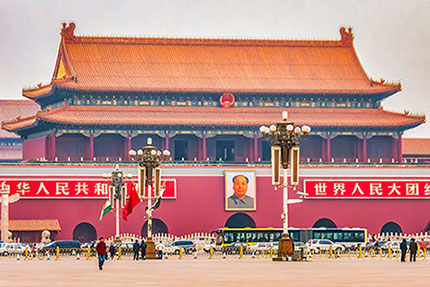
History of Economy in China and Present Situation of Futures Market (the second volume)
Nov. 22, 2023
In Japan, Agricultural Policy Research Committee, Inc. held the sixth meeting of Agricultural Market Study Group on October 23, and Journalist Ms. Ryoko Yamaguchi gave a lecture titled “Rice market-especially necessity of futures market and futures market in Dalian”(It is already posted).
More than 20 agricultural products are listed on Dalian Commodity Exchange (DCE) in China and japonica rice was listed on the exchange in August 2019. Originally in China, rice futures transaction was listed on Shanghai Oil Commodity Exchange (Shanghai Futures Exchange at present) in 1993, however, it was abolished due to frequent price hikes caused by supply shortages.
After that, in Zhengzhou, Henan Province, although staple food futures trading made a long-awaited comeback, the place was consumption area but not production area. Henan Province was dry and wasn’t originally a rice producing area but its population was large. Therefore, it appears to have been no growth in rice futures trading there.
In Japan, when permanent listing of rice futures transaction listed on Osaka Dojima Exchange (ODEX) wasn’t approved and its trial listing continued in August 2019, japonica rice was listed on DCE in China.
In China, It is very meaningful to be listed in Dalian, which is an important place for both a consumption and production area, and the meaning is different from listing in Zhengzhou.
The reasons why japonica rice was listed in Dalian compared to when it was listed in Shanghai:Progress was made in improving rice standards and inspections, ensuring sufficient delivery volume, there was enough competition, marketization was progressing, and the waves of price fluctuations were calming down-would be big.
The reason why China needs a futures market is to avoid risks by farmers in the rice industry first. As to rice, there is a difference of the length of transportation days between China and Japan. In China, japonica rice is basically produced in the north and transported to the south, that is japonica rice produced in Northeastern three provinces-Liaoning,Heilongjiang and Jilin provinces-is transported to consumption areas in the south. As most transportation is by ship, it takes up to two months for the transportation in some cases. Therefore, there is a risk that the price of rice is high when it was purchased, however, it will be cheaper when it arrives. The risk doesn’t exist in Japan today.
The second reason is that it is recognized futures trading is necessary to stabilize spot trading, so it is understood spot trading and futures trading as two wheels of a car. It is also true in Japan. In Japan, rice spot market started on October 16 this year, and to complement the spot market, it seems that a futures market is desired in Japan as well.
The third reason is diversification of listed products. In China, a large variety of agricultural products are listed on the futures market and japonica rice listed on DCE was the twenty-fourth product in the agricultural market in Dalian at the time. Corn, starch, two types of soybeans, bean cake, bean oil, palm oil, etc. are also available.
As to japonica rice, the rice market in China is not fully liberalized and it is still highly protected by the Chinese government. There is still the system by the Chinese government for purchasing rice, that is it is a price maintenance policy. In Japan, it is a guaranteed minimum purchase price. It is a system that guarantees farmer’s income through the government purchases at the minimum price determined by the government when there is an oversupply of rice.
In China, for example, in the case of 2023, the purchase price for 50 kilograms of japonica rice is 131 yuan, about 2,683 yen. Although the purchase quantity changes depending on the year, in the case of japonica rice, it is approximately 30 million tons per year, so this means that one-third to half of the production volume is purchased by the government. However, it is hard to sell at the purchase price, so there is a reality that a considerable amount of the purchased rice is used as feed rice.
(to be continued)
⇐【BACK】(the first volume)
History of Economy in China and Present Situation of Futures Market
(Futures Tribune・issued November 4, 2023 ・no.3250)
Link(Japanese site)
©2022 Keizai Express Corp.